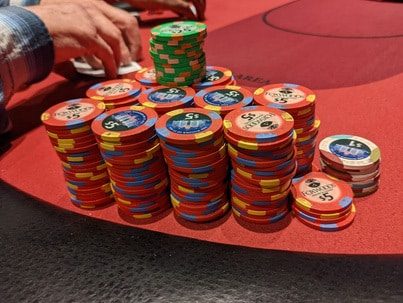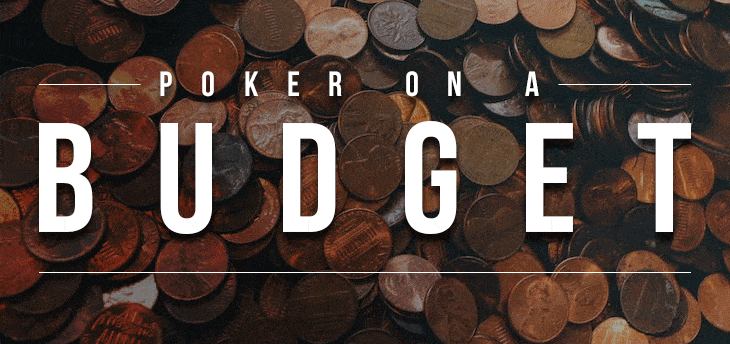In conclusion, poker movies have had a profound impact on pop culture, shaping the way people perceive and engage with the game of poker. From the early classics to the modern blockbusters, these films have captured the thrill, tension, and allure of poker, captivating audiences worldwide. Through compelling storytelling and visual techniques, they have made poker a trend in popular culture and contributed to the growth of the poker industry. The influence of poker movies continues to resonate, inspiring new generations of players and enthusiasts to join the exciting world of poker.
Setting a Poker Budget
To maximize your poker experience on a budget, it’s crucial to establish a dedicated poker budget. This will help you avoid overspending and ensure that your poker activities remain within your financial means.
Before diving into the poker world, take a moment to assess your financial situation. Consider your disposable income, monthly expenses, and any other financial commitments. It’s essential to allocate an amount that you can comfortably afford to dedicate to poker without compromising your financial stability.
Once you have a clear understanding of your financial standing, calculate a realistic bankroll. As a general rule, it’s advisable to set aside an amount equivalent to 20-30 buy-ins for the stakes you plan to play. This will provide you with a buffer to absorb variance and limit potential busts.
While it can be tempting to play higher stakes or extend your sessions, setting limits is crucial for playing poker on a budget. Establish buy-in limits that align with your bankroll and discipline yourself to stick to them. Avoid the temptation to chase losses or play above your means.
Additionally, determine session length limits to prevent burnout and maintain focus during your poker sessions. It’s important to recognize when it’s time to step away from the tables and avoid fatigue-induced mistakes.
To further safeguard your budget, create loss limits. Set a maximum amount you are willing to lose in a single session or within a specific timeframe. If you reach that limit, it’s a sign to take a break and reassess your strategy. Good poker sites, such as GGPoker, offer a way to lock in deposit limits, set time limits, and, if necessary, self-exclude from the site for a period of your choice.
![]()
Choosing the Right Poker Variants
With the number of poker variants available, it’s crucial to choose the ones that align with your budgetary goals and skill level. Let’s explore some factors to consider when selecting the right variants.
Familiarize yourself with the various poker variants, such as Texas Hold’em, Omaha, Seven-Card Stud, and more. Each variant has its own rules, betting structures, and strategies. Gain a solid understanding of the nuances of each game to make informed decisions while playing.
Certain poker variants have different table stakes and buy-in ranges. Opt for variants that offer lower stakes and buy-ins that are within your budget. This will ensure that you can comfortably participate in games without risking a significant portion of your bankroll.
Take into account your skill level and comfort when choosing poker variants. Some variants may require more advanced strategies or expertise. If you’re new to poker or looking to improve your skills, start with variants that are beginner-friendly. As you progress, you can gradually explore more challenging games.
Utilizing Bonuses and Promotions
One of the advantages of playing poker online is the availability of bonuses and promotions. By leveraging these offers effectively, you can stretch your poker budget and increase your potential for winnings.
Understanding Different Types of Bonuses
Online poker platforms typically offer various types of bonuses. Familiarize yourself with these to make the most of them:
- Welcome bonuses: These are offered to new players upon signing up and making their first deposit. Welcome bonuses can include bonus funds, free tournament entries, or other incentives.
- Reload bonuses: Designed to encourage existing players to deposit more, reload bonuses offer a percentage match on subsequent deposits.
- Freerolls and loyalty programs: Freerolls are tournaments with no entry fee but real-money prizes. Loyalty programs reward players for their continued play, offering perks such as cashback, exclusive tournaments, or merchandise.
Maximizing Bonus Value
Once you’ve identified a suitable platform with enticing bonuses, it’s crucial to utilize them effectively. Plan your deposits strategically to make the most of the bonus offers available.
For example, if a platform offers a 100% match on your first deposit up to a certain amount, consider depositing the maximum eligible amount to receive the full bonus. This will give your bankroll an instant boost, allowing you to play more games or at higher stakes without spending additional funds.

Managing Your Bankroll Effectively
To ensure long-term success in playing poker on a budget, effective bankroll management is essential. Let’s explore some key strategies to help you manage your bankroll wisely.
Implementing a Bankroll Management Strategy
- Determining optimal buy-ins and table stakes: Based on your bankroll, choose the appropriate buy-ins and table stakes that align with your budget. It’s recommended to allocate 1%-5% of your bankroll for each buy-in to minimize the risk of significant losses.
- Applying the 1%-5% rule for bankroll distribution: Divide your bankroll into smaller portions and allocate them to different stakes and game types. This diversification helps mitigate risk and ensures that you don’t risk a significant portion of your bankroll in a single session or game.
Avoid Unnecessary Risks and Tilt
Tilt, emotional frustration that leads to irrational decision-making, can be detrimental to your bankroll. Avoid unnecessary risks and make logical, well-calculated decisions based on the strength of your hand and the current game dynamics. When faced with a losing streak or unfavorable outcomes, take breaks to regain composure and prevent tilt from affecting your decision-making.
Adjusting Stakes
As your bankroll fluctuates, it’s important to adjust the stakes accordingly. If your bankroll grows, gradually move up to higher stakes for increased potential rewards. Conversely, if your bankroll decreases, be willing to move down to lower stakes to protect your remaining funds and rebuild your bankroll.

Developing Skills Through Practice
Improving your poker skills not only enhances your enjoyment of the game but also increases your chances of success. Here are some effective ways to develop your skills on a budget.
Utilizing Free-to-Play Options
Many online platforms offer free-to-play games or practice tables where you can refine your skills without risking real money. Take advantage of these opportunities to familiarize yourself with different variants, practice strategies, and gain valuable experience.
Participating in Low Stakes Games
Low-stakes cash games and tournaments are ideal for budget-conscious players looking to sharpen their skills. These games provide an opportunity to play for real money while keeping the financial risk minimal. Treat these games as learning experiences and focus on implementing strategies and observing your opponents’ gameplay.
Conclusion
Congratulations! You’ve reached the end of our guide on playing poker on a budget. By implementing the tips and strategies discussed throughout this article, you’re well-equipped to maximize your poker experience while staying within your financial means.




